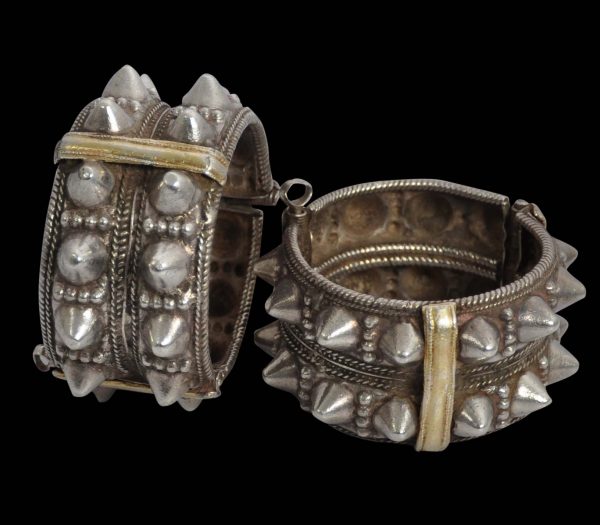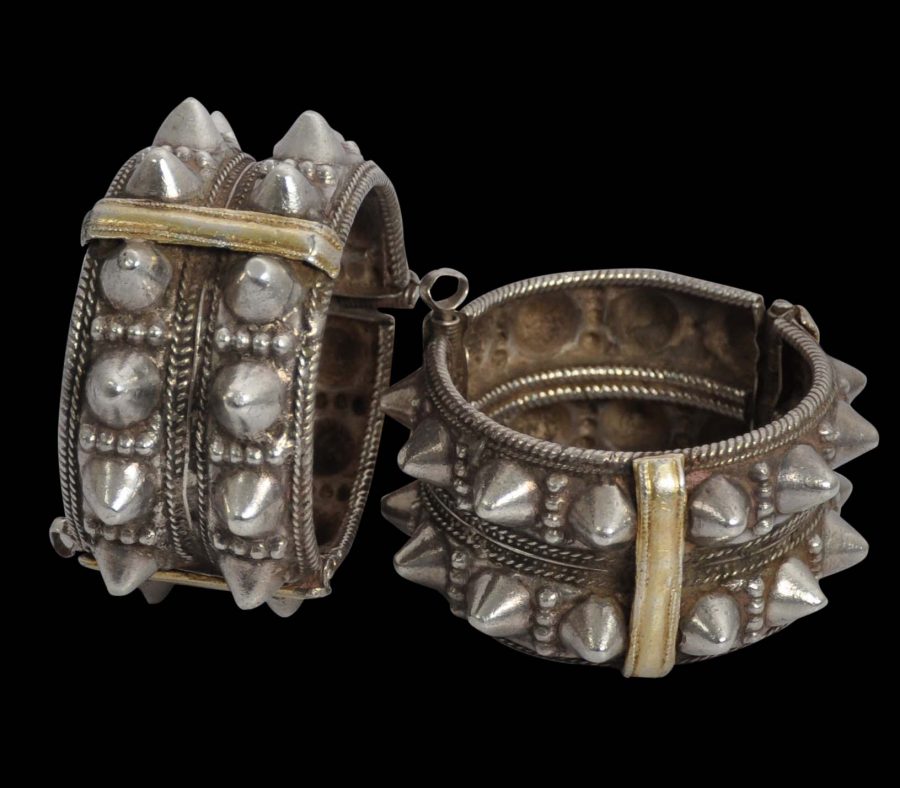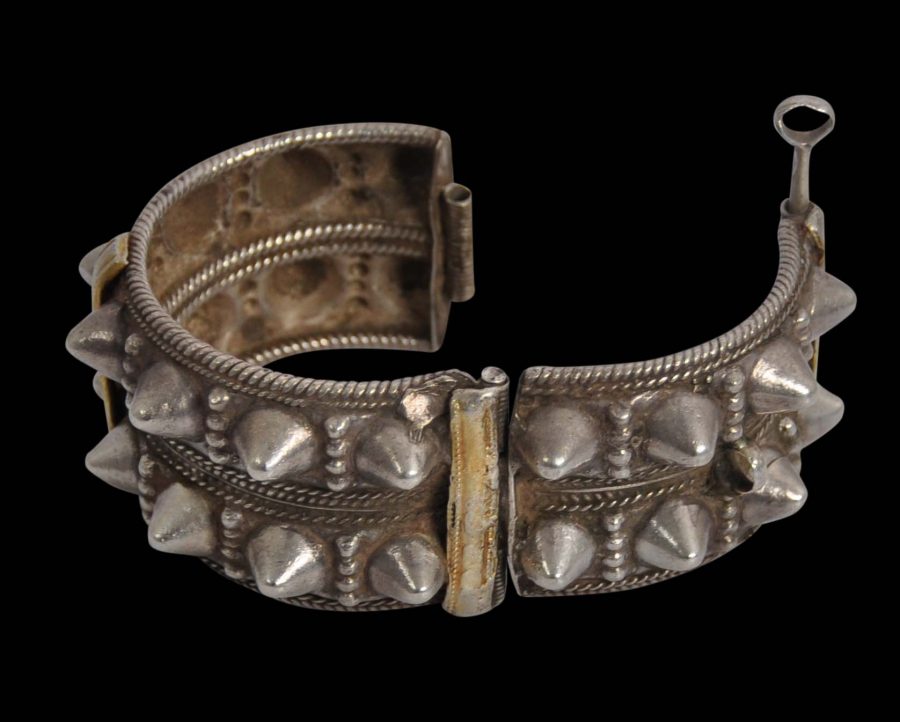This fine, matching pair of bracelets in high-grade silver are from Oman, versions of which once were worn by women all over the country. This pair, however, is likely to be from Sur, a town on Oman’s coast.
Each comprises two bands of spiky protuberances surrounded by fine pearled borders, and vertical plain bands overlaid with gold. (The name benagir bu shoka means ‘thorny bracelet.’)
They are hinged and open when a silver pin is pulled out.
One theory is that rather than being overtly aggressive, the spiky protuberances were intended to signify breasts and so tended to be worn by married women.
The pair here are in excellent condition and are very wearable.
Similar examples are illustrated in Geoffroy-Schneiter (2011, p. 35) and Hawley (1978).
References
Geoffroy-Schneiter, B., Asian Jewellery: Ethnic Rings, Bracelets, Necklaces, Earrings, Belts, Head Ornaments, Skira, 2011.
Hawley, R., Omani Silver, Longman, 1978.
Hawley, R., Silver: The Traditional Art of Oman, Stacey International, 2000.
Hoek, C., et al, Ethnic Jewellery: From Africa, Asia and Pacific Islands, Pepin Press, 2004.
Rajab, J.S., Silver Jewellery of Oman, Tareq Rajab Museum, 1998.







